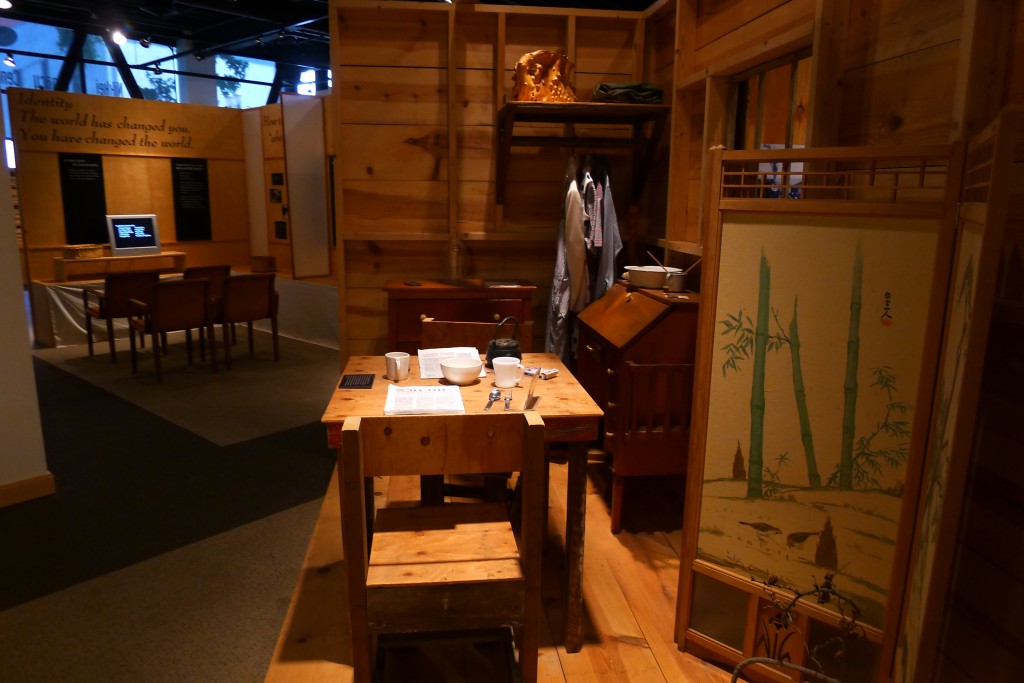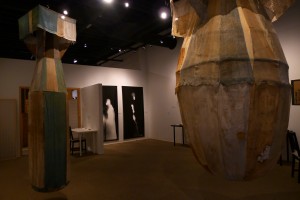June 9, 2013
Museums — even tiny ones — are where our collective culture is stored
 I visited the Oregon Nikkei Legacy Center in Portland, Oregon last week while on a business trip to the northwest, and I was struck at how important organizations like it, and the museum it operates are for our community.
Institutions from the largest such as the Japanese American National Museum in Los Angeles to one-room repositories such as the Nikkei Legacy Center or the Amache Museum in Granada, Colorado, are repositories for our collective memory as a community, and home to our history.
Portland’s museum is a project of the Oregon Nikkei Endowment, and it’s tucked into a storefront in the city’s Old Town district, in the midst of what used to be the Nihonmachi, or Japantown neighborhood.
One of the first items on display inside the door is a scale model of the district, with all the buildings labeled with the Japanese businesses that used to thrive. Only a couple of the businesses still exist, but they’re no longer in the neighborhood – the Nikkei Legacy Center is the only remaining sign of the community that was based here before WWII.
The museum does a great job within its limited space of tracing the Japanese’s arrival in the area, the variety of businesses, and then imprisonment during WWII. There are artifacts, models, and text explaining historical milestones.
A small area features a re-creation of an internment camp barrack's interior, with actual tables, chairs, desk and dresser (shown above) that were all built by internees in Minidoka, Idaho, where Portland JAs were imprisoned. The historical timeline of the permanent exhibit ends with a small video viewing area with interviews with local Nisei about the war years.
I visited the Oregon Nikkei Legacy Center in Portland, Oregon last week while on a business trip to the northwest, and I was struck at how important organizations like it, and the museum it operates are for our community.
Institutions from the largest such as the Japanese American National Museum in Los Angeles to one-room repositories such as the Nikkei Legacy Center or the Amache Museum in Granada, Colorado, are repositories for our collective memory as a community, and home to our history.
Portland’s museum is a project of the Oregon Nikkei Endowment, and it’s tucked into a storefront in the city’s Old Town district, in the midst of what used to be the Nihonmachi, or Japantown neighborhood.
One of the first items on display inside the door is a scale model of the district, with all the buildings labeled with the Japanese businesses that used to thrive. Only a couple of the businesses still exist, but they’re no longer in the neighborhood – the Nikkei Legacy Center is the only remaining sign of the community that was based here before WWII.
The museum does a great job within its limited space of tracing the Japanese’s arrival in the area, the variety of businesses, and then imprisonment during WWII. There are artifacts, models, and text explaining historical milestones.
A small area features a re-creation of an internment camp barrack's interior, with actual tables, chairs, desk and dresser (shown above) that were all built by internees in Minidoka, Idaho, where Portland JAs were imprisoned. The historical timeline of the permanent exhibit ends with a small video viewing area with interviews with local Nisei about the war years.
 In a small rotating gallery space in the back is a powerful, somber art exhibit (right) that addresses the horror of the atomic bombings of Hiroshima and Nagasaki, titled “Shadows and Black Rain: Memories, Histories, Places, Bodies.”
In a small rotating gallery space in the back is a powerful, somber art exhibit (right) that addresses the horror of the atomic bombings of Hiroshima and Nagasaki, titled “Shadows and Black Rain: Memories, Histories, Places, Bodies.”




 Denver's Japanese community knew it was coming: Even before the current angst and pain that newspapers in general are feeling thanks to declining circulation and dire economic times, the city's Japanese newspaper, the Rocky Mountain Jiho, shut down. Its owners, Eiichi and Yoriko Imada, had been subsidizing the weekly newspaper, which had one or two pages of news and features in English followed by a handful of pages of local and international news in Japanese, out of their own pockets for years. The advertising wasn't paying for the publication. But the paper had been part of the community for decades (they bought it from its previous owner in the 1980s), so they couldn't afford to keep it running anymore.
It was the Imadas who got me to write a weekly column about life from a Japanese American perspective on a volunteer basis, and suggested the name "Nikkei View." I started posting the columns online and I've never stopped, eventually turning the column into a Web site that covered not just JA, but also Asian American Pacific Islander issues.
Meanwhile, the Jiho ran out of money, time and energy. That was several years ago.
Now, even older, more established community newspapers -- which are among the "vernacular press," or foreign language media that serve immigrant communities throughout the U.S. -- in areas with Japanese populations are starting to shut down. The San Francisco area has shockingly lost both its Japanese papers in recent months.
The Nichi Bei Times was closed two months ago, and the
Denver's Japanese community knew it was coming: Even before the current angst and pain that newspapers in general are feeling thanks to declining circulation and dire economic times, the city's Japanese newspaper, the Rocky Mountain Jiho, shut down. Its owners, Eiichi and Yoriko Imada, had been subsidizing the weekly newspaper, which had one or two pages of news and features in English followed by a handful of pages of local and international news in Japanese, out of their own pockets for years. The advertising wasn't paying for the publication. But the paper had been part of the community for decades (they bought it from its previous owner in the 1980s), so they couldn't afford to keep it running anymore.
It was the Imadas who got me to write a weekly column about life from a Japanese American perspective on a volunteer basis, and suggested the name "Nikkei View." I started posting the columns online and I've never stopped, eventually turning the column into a Web site that covered not just JA, but also Asian American Pacific Islander issues.
Meanwhile, the Jiho ran out of money, time and energy. That was several years ago.
Now, even older, more established community newspapers -- which are among the "vernacular press," or foreign language media that serve immigrant communities throughout the U.S. -- in areas with Japanese populations are starting to shut down. The San Francisco area has shockingly lost both its Japanese papers in recent months.
The Nichi Bei Times was closed two months ago, and the  Unlike the many Chinatowns that serve as ethnic cultural enclaves in many American cities from coast to coast, and the increasing numbers of districts variously called "Koreatowns" and "Little Saigons," you won't find many Nihonmachi, or Japantowns. There are lots of reasons for this, but the main one is probably the Japanese American community's need to assimilate into mainstream America after the shame and humiliation of being imprisoned in internment camps during World War II. In the 1950s and '60s, most JAs moved into suburban America and avoided clustering in ethnic Japanese areas.
Denver has
Unlike the many Chinatowns that serve as ethnic cultural enclaves in many American cities from coast to coast, and the increasing numbers of districts variously called "Koreatowns" and "Little Saigons," you won't find many Nihonmachi, or Japantowns. There are lots of reasons for this, but the main one is probably the Japanese American community's need to assimilate into mainstream America after the shame and humiliation of being imprisoned in internment camps during World War II. In the 1950s and '60s, most JAs moved into suburban America and avoided clustering in ethnic Japanese areas.
Denver has 